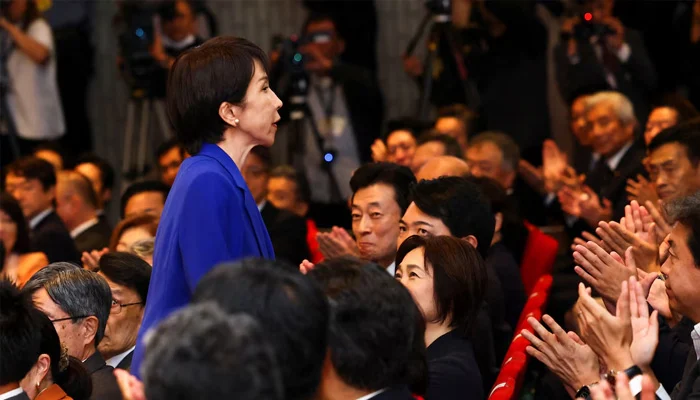Select Language:
Japan’s ruling party elected conservative nationalist Sanae Takaichi as its new leader on Saturday, positioning her to potentially become the nation’s first female prime minister. At 64 years old, Takaichi was chosen to restore public trust amid economic frustrations driven by rising costs and disillusionment with opposition parties promising large stimulus measures and stricter foreign policies.
The ousted internal affairs minister, known for her conservative views and expansionist economic plans, is set to succeed Prime Minister Shigeru Ishiba, as the Liberal Democratic Party (LDP) holds the majority in parliament. A parliamentary vote to confirm the new prime minister is scheduled for October 15.
The party faces internal challenges, as it has seen its grip weaken in recent years. Having governed Japan for most of the postwar era, the LDP’s hold has been threatened by the rise of other political groups, including the fiscally focused Democratic Party for the People and the anti-immigration Sanseito. These parties have been steadily gaining support, especially among younger voters.
Takaichi, the only woman among the five LDP candidates, defeated moderate Shinjiro Koizumi—44, and son of former Prime Minister Junichiro Koizumi—in the leadership race. She expressed her resolve to address the party’s identity crisis, stating, “Recently, I have heard strong voices from all over the country saying we’ve lost sight of what the LDP truly stands for.” She added, “That sense of urgency motivated me. I want to transform people’s worries about their daily lives and the future into hope.”
A known follower of former Prime Minister Shinzo Abe’s “Abenomics” policy, which aims to invigorate the economy through aggressive fiscal and monetary measures, Takaichi has criticized recent interest rate hikes by the Bank of Japan. Her approach signals potential policy shifts that could unsettle investors concerned about Japan’s substantial national debt.
Additionally, Takaichi has floated ideas to renegotiate a trade deal with U.S. President Donald Trump that lowered tariffs in exchange for Japanese investments backed by taxpayers. Her nationalist stances—like her regular visits to the Yasukuni Shrine, a controversial memorial linked to Japan’s military past—may strain relations with neighboring countries such as South Korea and China.
She advocates revising Japan’s pacifist constitution and has suggested forming a “quasi-security alliance” with Taiwan, which China claims as its territory. Takaichi plans to increase her international outreach, emphasizing her campaign slogan, “Japan is Back!”
A press conference is anticipated around 9 a.m. GMT.







